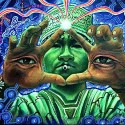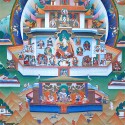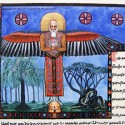Explore Articles Filed Under: Meditation

There are a number of human experiences that are characterized by presentness, detail, externality, and three-dimensional explorable spacefulness: we can call these visionary experiences. These can be characterized along two dimensions — according to the degree to which the experience is entered into intentionally, and by the amount of control the experiencer exercises over its content. Such visionary experiences appear to be quite widespread across cultures, and raise significant psychological and ontological questions.

Eidetic visualization — the creation of a minutely detailed mental image of the deity being contemplated, along with the deity’s palace, retinue, appurtenances, and the subtle deities distributed on the divine body — lies at the heart of Tibetan tantric meditation. The practice is ultimately linked to a wave of visionary devotionalism that began in India in the early centuries CE, affecting both Buddhism and the Hindu Vaiṣṇava tradition. The Buddhists, with long practice in eidetic visualization, have important things to say about visionary ontology.

Carl Jung believed that active imagination is a channel for messages from the unconscious. Most important, the dialogue with the contents of the unconscious is with persons — “exactly as if,” says Jung, “a dialogue were taking place between two human beings with equal rights.” Active imagination enters its own visionary landscape, often called the imaginal world. Immediately we face the question of the nature and ontological status of the persons we encounter there.

When we think about profound, important, transformative experiences in our lives, we often think in terms of a journey from one place to another. We think about a change from being closed to being open, from selfishness to generosity, from superficiality to depth. In our culture, people often anticipate that this journey will be more or less instantaneous, and that it will consist in a cognitive event — an epiphany, a revelation, a new understanding. I would like here to propose an embodied challenge to this sudden and revelatory model of transformation.

Assumptions about the ultimate aims of spiritual practice have been profoundly influenced by the advaita teachings of an aristocratic nineteenth-century Hindu monk named Swāmī Vivekānanda. These claims have so thoroughly entered our thinking about spirituality as to be unremarkable. But important Indian soteriological traditions contradict this philosophy, and, indeed, say precisely the opposite — that salvation lies not in realizing the unity of self and universe, but rather in achieving monadic isolation of the self.

Discussing the article:
Hallucinogens in Africa